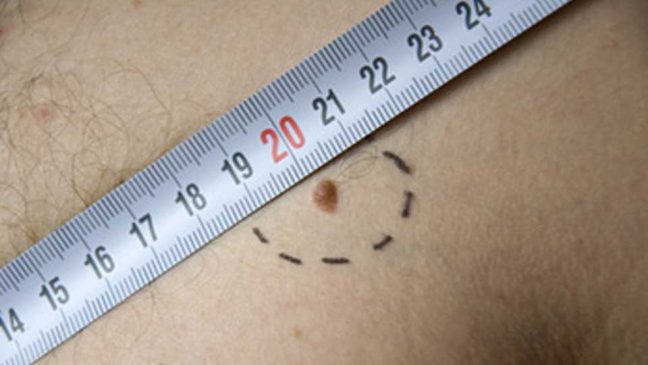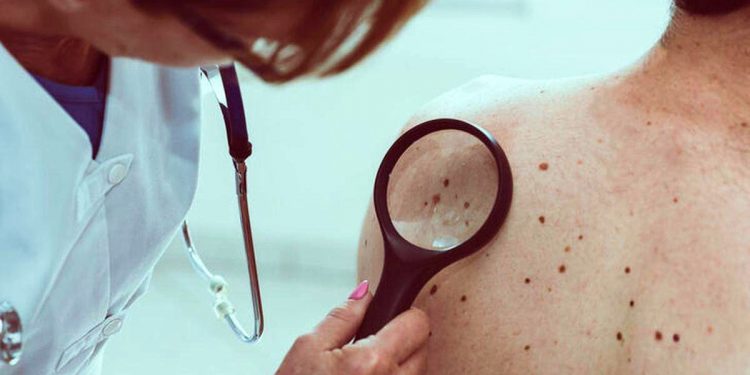Melanoma, although it constitutes 5% of skin cancers, is the most dangerous one with being responsible for 75% of deaths! Here are the symptoms…
According to the World Health Organization (WHO), 1 person dies every hour from melanoma, but melanoma can be noticed even with the help of a mirror.
What is melanoma?
Melanoma is among the most dangerous types of skin cancer caused by the malignant proliferation of color cells called “melanocytes” in the top layer of our skin.
According to the World Health Organization, more than 250,000 people are diagnosed with melanoma annually. The incidence worldwide is 3 per 100,000 and 1 person dies of this type of cancer every hour.
Early diagnosis saves lives
However, in the early period, 100% healing can be achieved if a diagnosis is made without going deep. The biggest priority here is to raise the awareness of the patients and to provide early admissions to the physician.
What are the symptoms of melanoma?
Melanoma; it begins and changes rapidly as a stain or blister that develops over a mole or on a stain on normal skin and is dark brown or black in color, 3-4 mm wide, round, the edges of which resemble a uniform mole.
It can rarely be colorless or pink in color. That is why it is necessary to pay close attention to rapidly growing skin color or pinkish blisters. If it is not recognized early, as it grows, it swells, it can bleed with friction.
The transformation of melanoma into fluffy when it is a spot is a bad sign that the cancer has deepened, that is, spread throughout the body. If the diagnosis is viewed with a dermoscope, a light magnifying glass, the dermatologist who can see through the skin will reach the correct diagnosis with 90-95% sensitivity.
When should we suspect the skin spots or moles?

- It is not round but asymmetrical, that is, it cannot be divided into 2 equal parts.
- The transition (change) in color, shape, size, itching, bleeding.
- Irregular, indented protrusions of the edges.
- It contains different tints.
- The diameter is greater than 5 mm.
According to NHS, the most important of these symptoms is the transition. The strongest sign about catching this type of skin cancer early is the growth of the diameter, shape and color of this stain, spot or blister. In this case, you should go to the doctor immediately.
In what parts of the body does melanoma occur?
It should be noted that melanoma can be seen at all ages and all parts of the skin, including children, including face, torso, arm, leg, sole, palm, scalp, nails, even oral and genital area.
Who is at risk?
- Light-skinned, sun-sensitive, people who flash immediately but can’t tan, people with blonde or red hair, colored eyes.
- Immuno-suppressed people.
- Especially those who suffered severe sunburn as children.
- People who’ve been exposed to the intense sun all their lives.
- Those who have a history of melanoma in themselves or in their family.
- A lot of people with me.
- People with moles that show suspicious characteristics in terms of shape, color and size.
- People with congenital moles.
- People with non-melanoma skin cancer.

What is the effect of the sun and solarium?
Melanoma is usually seen in older age, after 50-55 years, while in recent years it has been increasing rapidly in children, adolescents and young adults. Unprotected extreme sun exposure and solariums lead to an increase for young people.
Is it possible to treat the melanoma?
Melanoma treatment is possible. Especially in the early period, if the cancer has not yet exceeded the upper layer, 100% healing is achieved by surgical removal of the tumor; no additional treatment is required. In other words, the main treatment of melanoma is the surgical removal of the tumor as soon as possible.
A benign blemish diagnosed or me will be removed from unnecessary surgery. If melanoma is observed, cancer screening tests will be performed for the whole body and additional treatments will be planned accordingly to determine the degree and prevalence of the disease.
The most important thing to remember is that regardless of the degree of the disease, a patient diagnosed with melanoma should be monitored for life. You may not see other cancers in your body, but melanoma is right in front of you.


